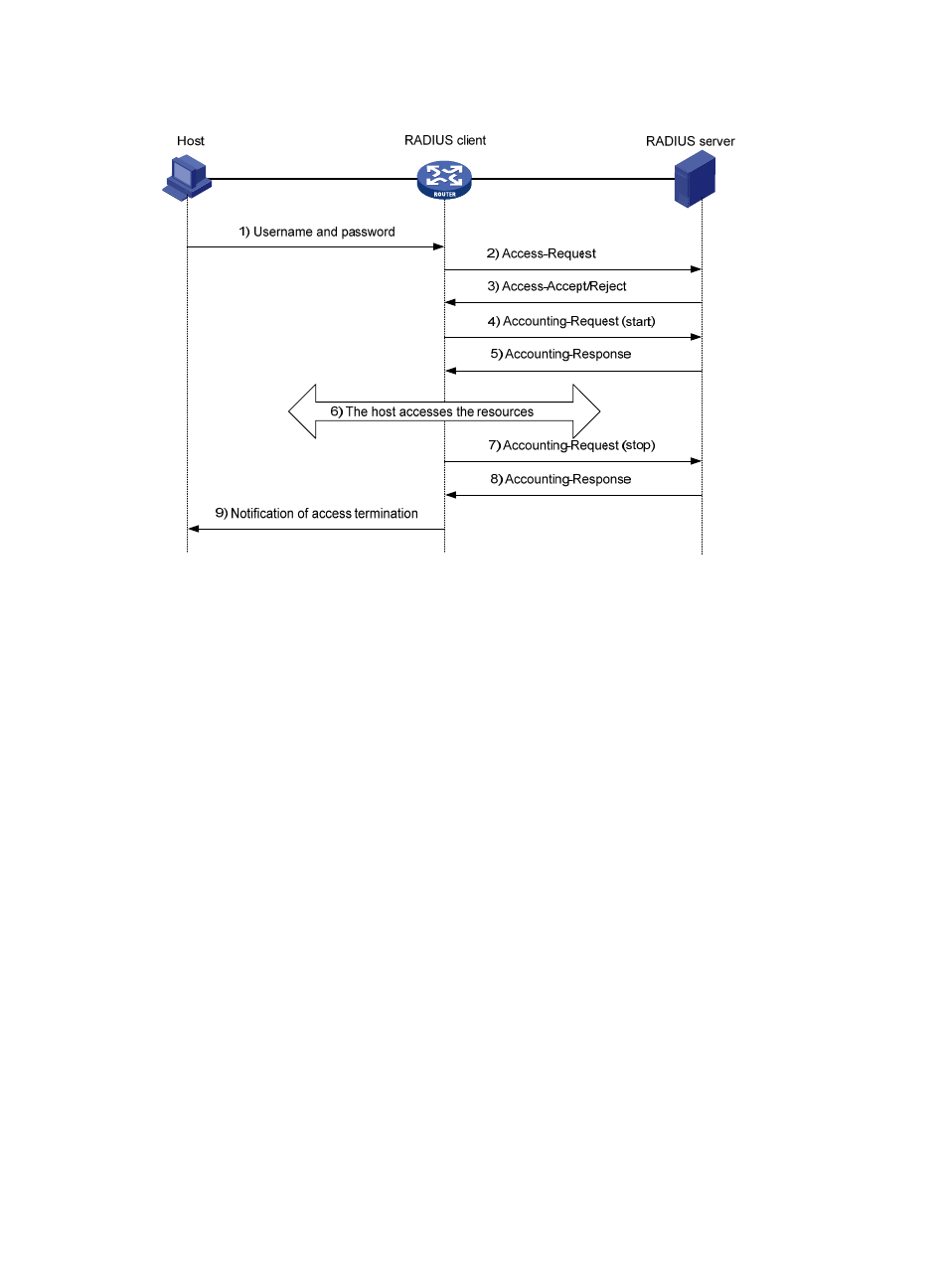Radius packet format – H3C Technologies H3C SecBlade LB Cards User Manual
Page 50

39
Figure 22 Basic RADIUS message exchange process
RADIUS operates in the following manner:
1.
The host initiates a connection request that carries the user's username and password to the
RADIUS client.
2.
Having received the username and password, the RADIUS client sends an authentication request
(Access-Request) to the RADIUS server, with the user password encrypted by using the MD5
algorithm and the shared key.
3.
The RADIUS server authenticates the username and password. If the authentication succeeds, the
server returns an Access-Accept message containing the user's authorization information. If the
authentication fails, the server returns an Access-Reject message.
4.
The RADIUS client permits or denies the user according to the returned authentication result. If it
permits the user, it sends a start-accounting request (Accounting-Request) to the RADIUS server.
5.
The RADIUS server returns an acknowledgement (Accounting-Response) and starts accounting.
6.
The user accesses the network resources.
7.
The host requests the RADIUS client to tear down the connection and the RADIUS client sends a
stop-accounting request (Accounting-Request) to the RADIUS server.
8.
The RADIUS server returns an acknowledgement (Accounting-Response) and stops accounting for
the user.
RADIUS packet format
RADIUS uses UDP to transmit messages. To ensure smooth message exchange between the RADIUS
server and the client, RADIUS uses a timer management mechanism, a retransmission mechanism, and
a backup server mechanism.
shows the RADIUS packet format.
